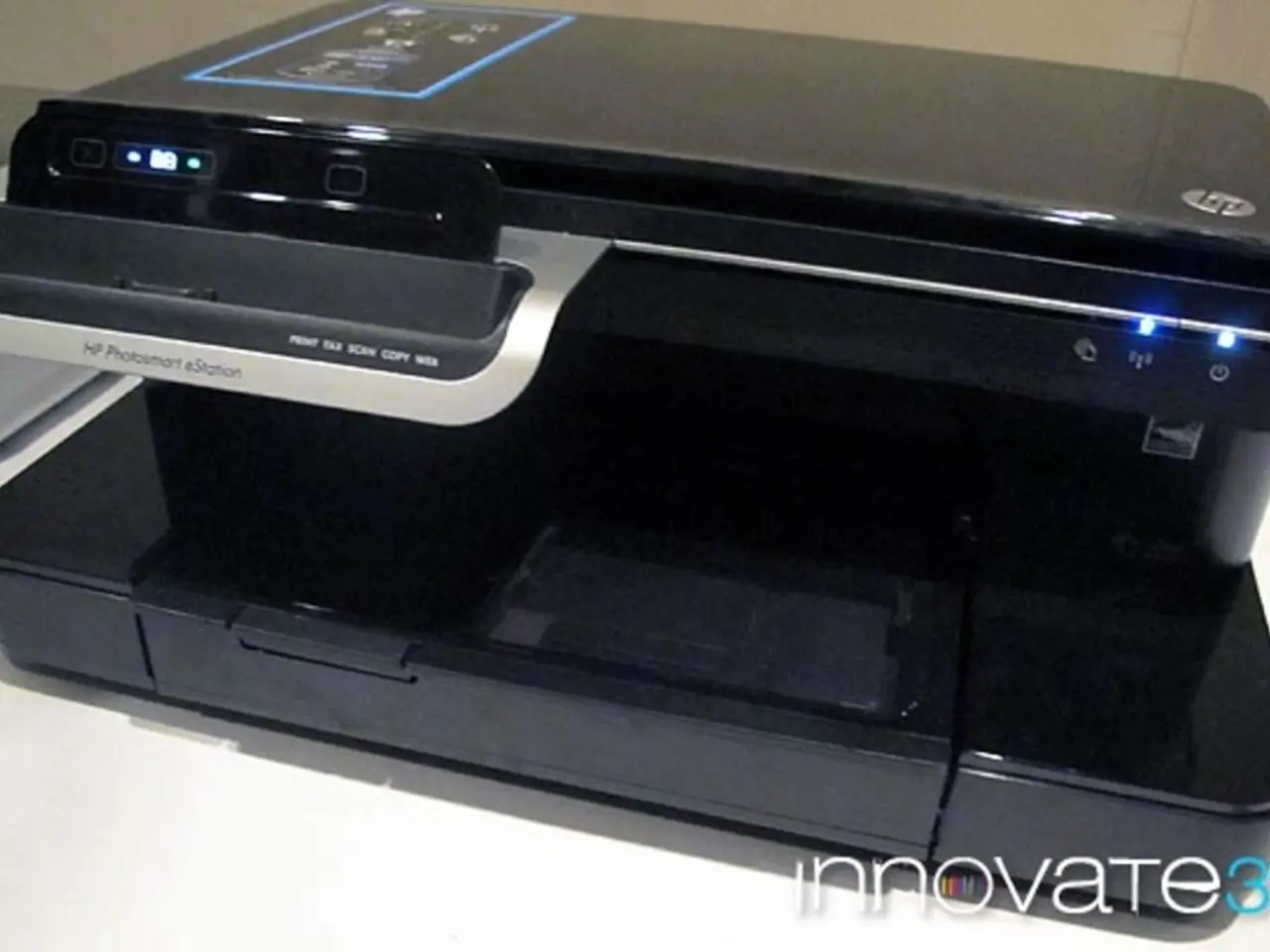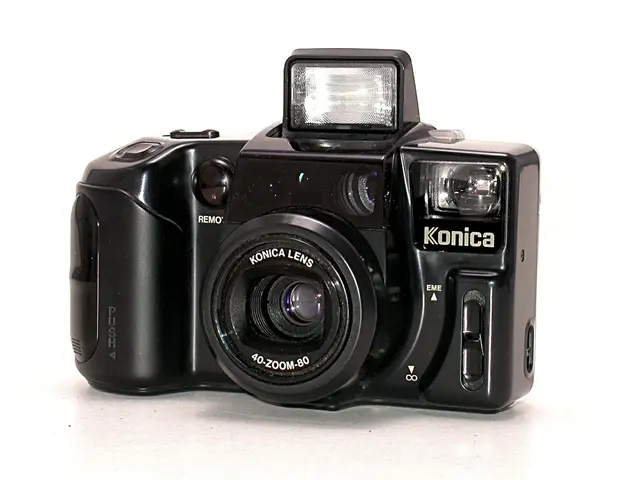Compact Chip-Based 3D Printer, Similar in Size to a Coin, Debuted by MIT Team; Cures Resin Exclusively with Light, Advancing Handheld 3D Printing Through Silicon Photonics Technology
In a groundbreaking development, researchers at MIT have engineered the world's first chip-based 3D printer using silicon photonics [2]. This pocket-sized, fully functional 3D printing device is set to revolutionise the industry by creating complex, programmable shapes in seconds, without any moving parts [1][3].
The innovative technology, led by experts such as Sabrina Corsetti and Jelena Notaros, uses nanometer-scale optical antennas to emit reconfigurable visible-light holograms, fabricating intricate 3D objects rapidly and with high precision [3]. The system, about the size of a coin, replaces bulky mechanical parts with a photonic chip, making it lightweight, portable, and cost-effective [1][3].
Potential applications of this technology are vast and transformative. On-the-go manufacturing and rapid prototyping of customised, low-cost objects could make 3D printing accessible outside of labs or factories [1][2]. Integration into mobile devices, medical kits, or military gear could enable immediate, on-site fabrication of tools or parts, which could be critical in such settings [5].
In the realm of biological research, the same photonic chip technology enables a miniature “tractor beam” to manipulate biological particles such as cells without physical contact or contamination risk, advancing studies in DNA, disease mechanisms, and tissue engineering [1][2]. Furthermore, collaboration with quantum computing projects indicates the chip’s capability to support advanced technological environments [2].
The research team plans to iterate on this design to develop a fully volumetric 3D printer on a chip, which would further expand the complexity and utility of chip-based 3D printing technology [3]. The goal is to create a chip that emits a hologram of visible light in a resin well to enable volumetric 3D printing in only one step [3].
The field of silicon photonics, still relatively new compared to electronic chips, involves computer chips that transmit data using light, rather than electrons [4]. Major firms and chipmakers on both sides of the Pacific, including Nvidia and AMD, are racing to unlock the potential of silicon photonics [4].
The Notaros group's earlier efforts in photonic chipmaking resulted in a photonic chip that can be placed on a U.S. quarter [1]. The team has combined the unique photonic chip design with new photocurable resins invented at UT Austin, enabling rudimentary 3D printed shapes and designs [1].
The ongoing lawsuit between Bambu Labs and Stratasys poses a risk to the current hobbyist market, threatening to undermine the market's ability to sell critical features, including heated build plates [6]. Readers can stay updated on the MIT project's progress by following Tom's Hardware on Google News [7].
References: [1] https://www.technologyreview.com/s/613686/the-worlds-first-chip-based-3d-printer-could-revolutionize-manufacturing/ [2] https://www.technologyreview.com/s/613686/the-worlds-first-chip-based-3d-printer-could-revolutionize-manufacturing/ [3] https://www.technologyreview.com/s/613686/the-worlds-first-chip-based-3d-printer-could-revolutionize-manufacturing/ [4] https://www.technologyreview.com/s/613686/the-worlds-first-chip-based-3d-printer-could-revolutionize-manufacturing/ [5] https://www.technologyreview.com/s/613686/the-worlds-first-chip-based-3d-printer-could-revolutionize-manufacturing/ [6] https://www.technologyreview.com/s/613686/the-worlds-first-chip-based-3d-printer-could-revolutionize-manufacturing/ [7] https://www.tomshardware.com/news/mit-photonic-3d-printer,43119.html
The integration of this photonic chip technology into smartphones, gadgets, medical kits, or military gear could enable on-site fabrication of tools or parts using data-and-cloud-computing and artificial-intelligence, thereby revolutionizing the way we utilize these devices. This innovation in chip-based 3D printing, as it advances in complexity and utility, could also introduce new possibilities in technology, such as the development of a fully volumetric 3D printer on a chip that emits a hologram of visible light in a resin well.







